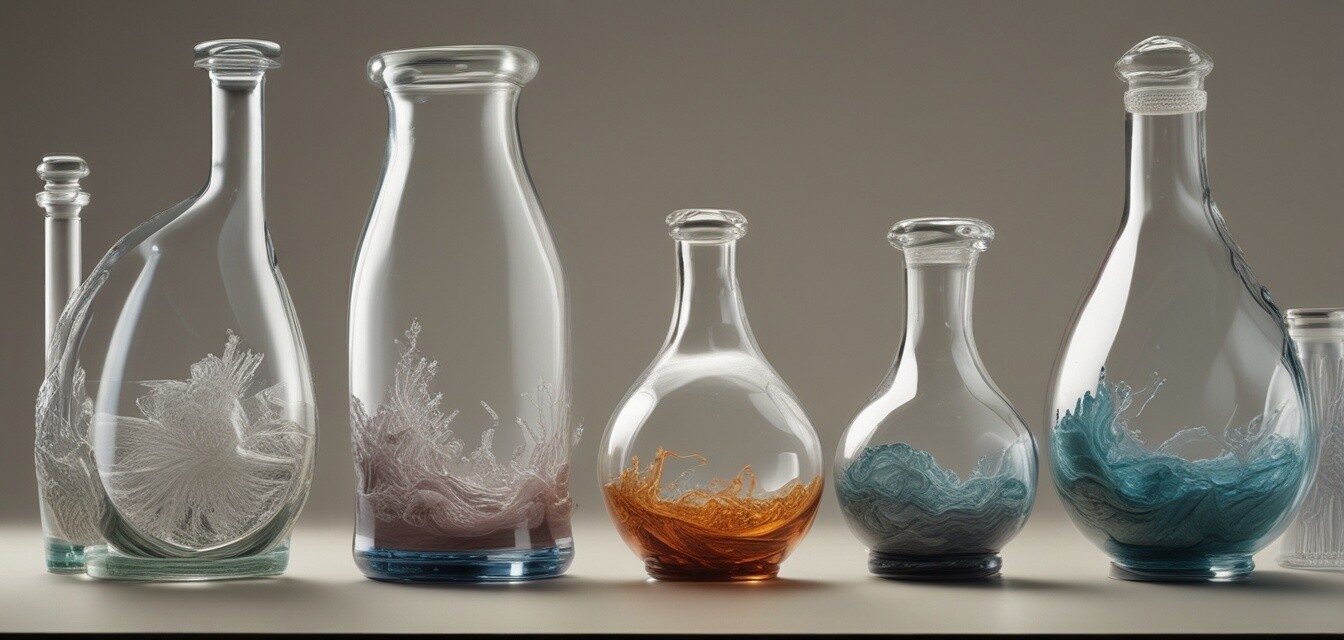
The Evolution of Glass Mold Materials
Key Takeaways
- The materials used for glass molds have undergone significant advancements, impacting the precision and creativity of glass art.
- Innovations such as silicone and ceramic molds have broadened artistic possibilities.
- The choice of mold material affects the final outcomes in terms of texture, durability, and complexity of designs.
In the world of glass art, molds play a crucial role in shaping creativity and outcomes. This article delves into the evolution of glass mold materials, highlighting significant innovations and their impact on glass art practices. From traditional materials to modern advancements, let's explore how glass molds have transformed the art of glass making.
The Importance of Mold Materials in Glass Art
Glass molds are essential for creating various designs and forms. The choice of material affects the final glass piece regarding texture, durability, and functionality. There are several types of materials used for glass molds:
| Material Type | Properties | Best Uses |
|---|---|---|
| Metal | Strong and durable; conducts heat well | Production of intricate designs and repeating patterns |
| Ceramic | Resistant to thermal shock; provides smooth finishes | Creating bowls, platters, and essential glass shapes |
| Silicone | Flexible and non-stick; enables easy release | Experimental designs and small-scale productions |
| Glass | Allows for unique textures and finishes | Used for casting glass pieces |
Historical Overview of Glass Mold Materials
Initially, glass mold making was simple. As glass crafting evolved, so did the materials used for molds. Below are key milestones in the evolution of glass mold materials:
- Ancient Times: The use of clay and stone molds was common as artisans shaped glass primarily for function, such as jars and basic decorative pieces.
- Renaissance Era: The introduction of metal molds allowed for greater detail and complexity in glass designs, leading to intricate glassworks that displayed artistic expression.
- 20th Century: The innovation of ceramic molds brought improved durability and thermal shock resistance, thus enabling artists to experiment with more complex forms and shapes.
- Modern Day: The arrival of silicone molds has revolutionized glass fuse art, offering flexibility and reducing the production time for intricate designs.
Innovations and Their Impact on Techniques
As technology has progressed, so have techniques in glass making, significantly influenced by the materials used for molds. Each innovation has paved the way for new styles and methods:
- 3D Printing: Enables artists to create custom molds tailored to specific designs, which expedites the creative process.
- Environmentally Friendly Materials: Innovations towards sustainable mold materials have decreased waste in glass art, promoting eco-friendly practices.
- Hybrid Molds: Combining multiple materials such as ceramic with silicone allows for molds that are both durable and easy to use, providing artists with unprecedented versatility.
The Future of Glass Mold Materials
Looking forward, we anticipate further advancements in mold materials and technologies. The integration of smart materials that self-regulate temperature or enable real-time feedback during the molding process could redefine the art.
Choosing the Right Mold for Your Glass Project
Selecting the right mold is crucial for achieving the desired artistic result. Here are some factors to consider:
Tips for Choosing Glass Molds
- Assess the complexity of your design - Some molds handle intricate designs better than others.
- Consider the type of glass you're using - Ensure that the mold material can withstand the temperature and pressure required.
- Factor in reuse and longevity - Some materials are more durable than others, which may affect long-term costs.
- Evaluate your skill level - If you're a beginner, you may want to start with flexible silicone molds that are easier to work with.
Conclusion
The evolution of glass mold materials has opened doors to infinite possibilities in glass art. From using clay in ancient times to the innovations of today, each stage has significantly impacted artistic practices. As glass artists, understanding these advancements allows us to harness the potential of our materials to create innovative and beautiful glass pieces. If you want to explore more about glass molds, check out additional resources in our Glass Molds category.
Pros
- Diverse options available to cater to different artistic needs.
- Advancements encourage creativity and experimentation.
- Ease of use with modern materials promotes accessibility for beginners.
Cons
- Some materials can be expensive initially.
- Learning curve for mastering new techniques may be steep.

